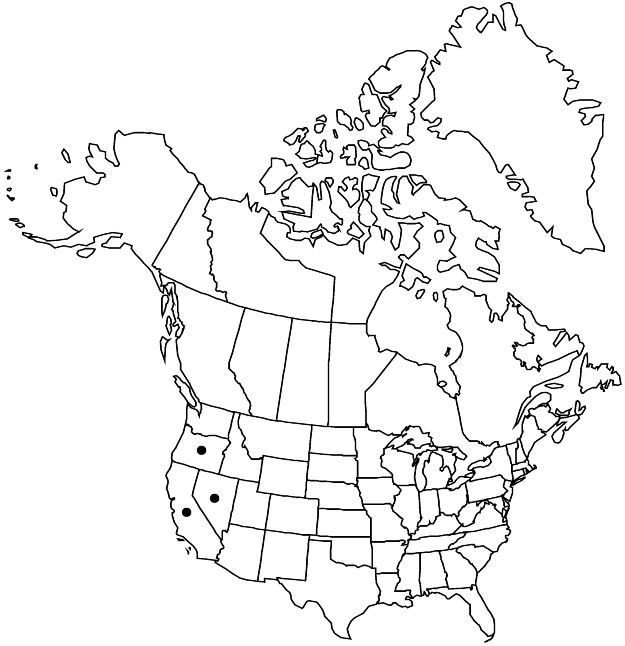Ivesia shockleyi var. shockleyi
Stems 0.2–0.7(–1.1) dm. Basal leaves (1–)2–8(–10) cm; lateral leaflets (3–)5–10 per side, lobes 2–5(–7), oblanceolate to obovate. Cauline leaves 0.3–1 cm, blade vestigial, leaflets usually 0. Inflorescences 2–10-flowered, 0.5–3 cm diam.
Phenology: Flowering spring–early summer.
Habitat: Gravelly to rocky slopes and ridges, mainly in high-elevation sagebrush communities, subalpine or alpine conifer woodlands, alpine tundra communities
Elevation: 1700–4000 m
Distribution

Calif., Nev., Oreg.
Discussion
Of conservation concern.
Variety shockleyi occurs mainly on rocky slopes and talus near and above timberline from the crest of the northern and central Sierra Nevada in California and adjacent Nevada, to Lake and Malheur counties, Oregon, and on scattered sky islands as far as the Toquima Range (Nye County) and Jarbidge Mountains (Elko County) of Nevada. These isolated populations have developed variation that merits further analysis: plants from the northern Intermountain Region tend to have flowers and leaflets larger than those in the Sierra Nevada; central Nevada populations approach var. ostleri in leaflet number and inflorescence size. The Malheur County plants are unusual in occurring on canyon rimrock (West Little Owyhee River) 1000 m lower than any other known population, near I. baileyi var. beneolens on adjacent canyon walls.
Selected References
None.